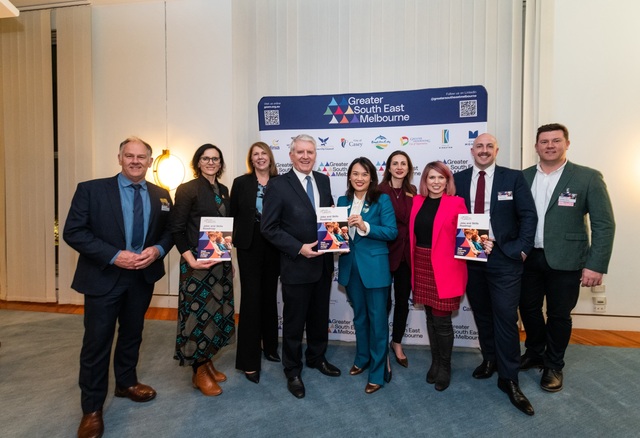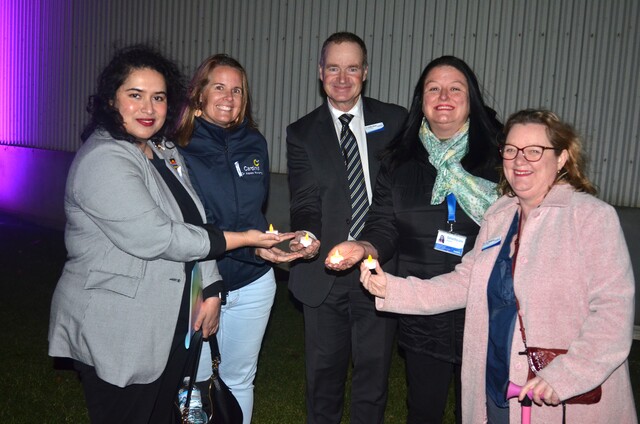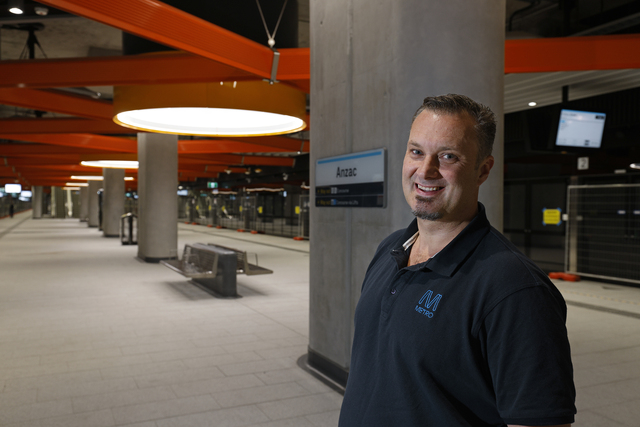The South East’s “critical” manufacturing sector was “key” to the Government’s ‘A Future Made in Australia’ plan, Federal Skills Minister Brendan O’Connor told a regional delegation in Canberra.
Mr O’Connor addressed the launch of a jobs and skills roadmap presented by a Greater South East Melbourne (GSEM) delegation at Parliament House on 26 June.
The roadmap aims to create well-paid, secure jobs and provide the necessary skills closer to home for the fast-growing GSEM region’s 1.5 million residents.
Addressing the launch, Mr O’Connor said the roadmap would inspire him to help regions across the country.
“Planning for skills needs is critical at a time when the economy and labour market are rapidly changing.
“(The roadmap) will help inform me about how other regions of Australia can take the best approach to ensuring that we have successful economies, good jobs and of course, ultimately, a successful nation.”
Mr O’Connor said the Government agreed with GSEM on the need for greater collaboration, so to invest in education and training “in areas of existing and growing demand”.
“We both get the need for strategic planning to address current workforce requirements.
“We understand the importance of improving equity, inclusive growth and reducing disadvantage in our VET (Vocational Education and Training) sector,”
The launch’s roll-call included deputy PM Richard Marles, deputy Senate leader Don Farrell, Immigration Minister Andrew Giles, Infrastructure and Local Government Minister Catherine King, and Home Affairs Minister and Hotham MP Clare O’Neil.
Six other federal MPs from the South East attended – Bruce MP Julian Hill, Holt MP Cassandra Fernando, Dunkley MP Jodie Belyea, Aston MP Mary Doyle, Chisholm MP Carina Garland and Flinders MP Zoe McKenzie.
GSEM chair Simon McKeon said the launch “could not have been more successful”.
“We are looking forward to working collaboratively with government at all levels to deliver for the workers and employers of the GSEM region.”
Mr McKeon said the region’s communities deserved to contribute and share in Australia’s prosperity and to have meaningful employment closer to home.
“One of the main challenges facing the GSEM region is making sure growth is beneficial and shared across the community,” Mr McKeon said.
“Pockets of serious disadvantage exist across Melbourne’s southeast, but so do significant untapped pockets of opportunity and we need to link the need with the opportunities.
“That is what we are seeking to create with this GSEM Jobs and Skills Roadmap.”
The delegation included the region’s seven mayors as well as industry, business, education and community leaders as a “unified voice” for the region.
Greater Dandenong mayor Lana Formoso said it was vital to end the disconnect between the area’s job-rich industrial precinct and high unemployment.
“How many of our kids can’t go to university because of their visa status and not being able to afford it?”
She said the launch opened the eyes of Government Ministers in the room.
“There’s a misconception and stigma attached to Dandenong and the South East. This is the biggest growth corridor in the country, with potential to be bigger than Western Sydney.”
The roadmap derives from a summit of more than 200 of the region’s leaders in early May.
Among the ideas is immediate funding for education providers to target foundation study for migrants and other disadvantaged groups in the vastly-multicultural region.
GSEM also wants a simpler process for recognising overseas qualifications and a taskforce to help reform English competency testing for migrants and refugees.
Expanded programs to support students to earn while learning was also required.
In the medium to long term, GSEM called for support for emerging industries and innovation, for inclusive growth and reduced disadvantage and for industry-education-community connections.
The GSEM region which includes Casey, Cardinia and Greater Dandenong and five other council areas comprises 500,000 jobs and 85,000 businesses.
It is one of Australia’s largest manufacturing regions with $85 billion in Gross Regional Product.







